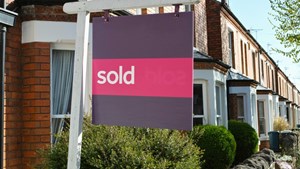Who needs to pay stamp duty?
5 minute read

Stamp Duty Land Tax (SDLT), more commonly referred to as stamp duty, is a type of tax based on the property price. Unless exempt, it needs to be paid upon completion of the purchase. But who actually needs to pay stamp duty, and how can you calculate the costs?

Finance & Planning
Help prepare for whatever life may bring with our range of services for planning for the future, keeping control of your finances, and managing your personal affairs.
Please note: the guidance in this article only applies to homes in England. Stamp duty rates and rules will differ for properties in Scotland and Wales. Further guidance can be found here.
Do I have to pay stamp duty?
Whether you have to pay stamp duty, and indeed how much you have to pay, could differ depending on the number of homes you’ve previously owned, the cost of the house you’re purchasing and other factors, such as whether it’s a new build or a shared ownership property.
To find out whether you need to pay it based on your personal circumstances, keep reading.
Who pays stamp duty, the buyer or seller?
Only the buyer of a property is required to pay stamp duty.
You have 14 days after you complete the purchase of a property to file a return to HMRC and pay any stamp duty that is due. Your solicitor or conveyancer will usually calculate and pay your stamp duty bill on your behalf. They will normally submit your return and pay the stamp duty on completion day, having collected the money from you in advance.
Stamp duty rates for a residential property
On 1st April 2025, stamp duty rates returned to the levels in place prior to 23rd September 2022.
If you are buying a residential property and are no longer a first-time buyer, then your stamp duty will be calculated on a rising scale, starting from £125,000. If you are buying a second home, these rates will be higher (see below for more detail).
Current SDLT rates
- 0% on the first £125,000
- 2% on the next £125,000 (£125,001 to £250,000)
- 5% on the next £675,000 (£250,001 to £925,000)
- 10% on the next £575,000 (the portion from £925,001 to £1.5 million)
- 12% on the remaining amount (£1.5 million and above)
Do first time buyers have to pay stamp duty?
If you’re a first-time buyer, you will pay no stamp duty on the initial £300,000 if the property is worth £500,000 or less.
Example
You are a first-time buyer and you’re purchasing a home worth £500,000. Therefore, the stamp duty will be calculated as:
- 0% on the first £300,000 = £0
- 5% on the remaining £200,000 = £10,000
For properties worth over £500,000, the first-time buyer relief is not available and standard stamp duty rates, as listed above, apply.
You are considered a first-time buyer if this is your first home purchase and if it’s your only residence. If you’re a couple purchasing a home, it must be the first property either of you has bought. If one of you has bought a home in the past, you won’t be considered first-time buyers, so do take this into account.
Do you pay stamp duty on a second home?
Thinking about buying a second home? There are separate stamp duty rules for this, too.
When purchasing a second home, each band increases by 5%, meaning you pay more stamp duty.
This increase is in place for any property over £40,000 but excludes caravans, mobile homes and houseboats.
Stamp duty rates for second homes
- 5% on the first £125,000
- 7% on the next £125,000 (£125,001 to £250,000)
- 10% on the next £675,000 (£250,001 to £925,000)
- 15% on the next £575,000 (the portion from £925,001 to £1.5 million)
- 17% on the remaining amount (£1.5 million and above)
Do you pay stamp duty on a new build?
The same rules apply to new builds as to any other property, so whether you’re purchasing a brand new home or one that’s older, the stamp duty rate will remain the same. However, it is worth considering exactly how much stamp duty you have to pay.
Generally when buying a new build, you’re provided with the basic purchase price. However, this will increase depending on the extras you choose. For instance, you might upgrade your kitchen finishes, tiles, security, electrics, lighting, fireplaces and more for an extra fee. This fee gets added to the price of the property, which can ultimately result in an increased stamp duty charge.
Do you pay stamp duty on shared ownership?
The rules relating to stamp duty and shared ownership are slightly different again to if you were buying a property with full ownership.
The same tax thresholds apply when you purchase a shared ownership property, but there are a couple of ways in which you can pay it. To qualify for these ways of paying, you have to apply for a shared ownership lease through a qualifying body, such as local housing authority, housing association or housing action trust. This is because the stamp duty is based on the share of the property and not the total cost.
Whereas stamp duty usually needs to be paid in full upon completion, along with your solicitors’ fees, you can choose to pay in stages when purchasing a shared ownership building.
First, you pay what’s due on the first purchase amount but no further payments are required until you own at least 80% of the total property.
Alternatively, you could choose to make a one-off payment. This is also known as a market value election. This figure is based on the total market value of the property and means you don’t need to pay any more stamp duty even if you purchase more shares in the building.
Summary
Calculating stamp duty is an important part of any property purchase. If you plan on building a new home in the future, keep these key points in mind:
- Stamp duty is calculated on rising price bands, which are subject to increasing percentages as a property gets more expensive.
- First-time buyers won’t pay any tax on the first £300,000. This is reduced to £125,000 for subsequent purchases (unless the property is worth over £500,000, in which case, standard stamp duty applies).
- Second homes are subject to an extra 5% tax for each band – this does not apply to caravans, mobile homes or house boats.
- A solicitor will typically help you calculate the required stamp duty and will manage the payment, which is due 14 days after you complete the purchase.
*Information correct as of April 2025.

Sign up to the Age Co Newsletter
Each month, our email newsletter delivers inspiring stories, practical guides to later life, plus the latest news about Age Co and the charitable work we support.
